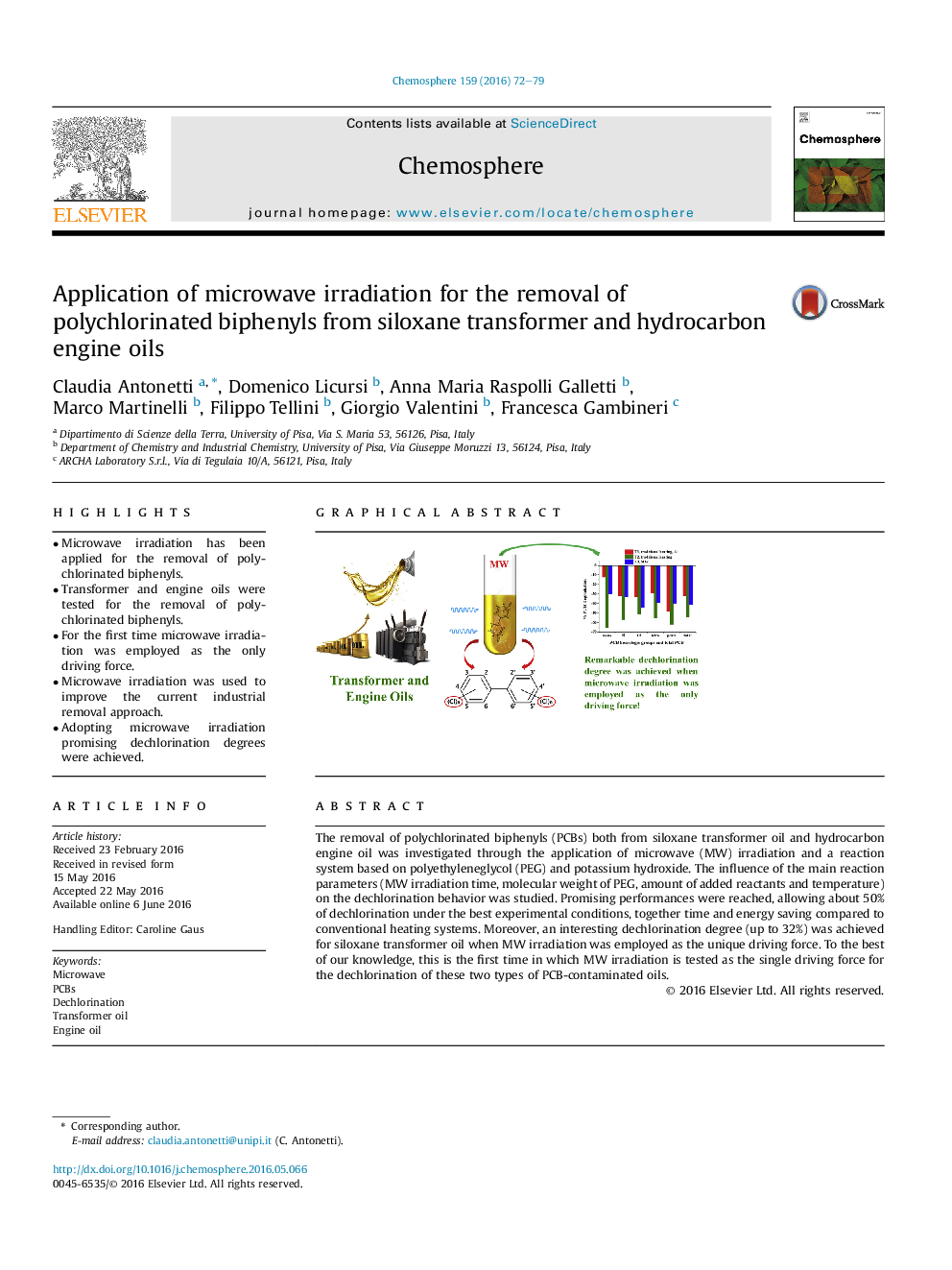| Article ID | Journal | Published Year | Pages | File Type |
|---|---|---|---|---|
| 4407406 | Chemosphere | 2016 | 8 Pages |
•Microwave irradiation has been applied for the removal of polychlorinated biphenyls.•Transformer and engine oils were tested for the removal of polychlorinated biphenyls.•For the first time microwave irradiation was employed as the only driving force.•Microwave irradiation was used to improve the current industrial removal approach.•Adopting microwave irradiation promising dechlorination degrees were achieved.
The removal of polychlorinated biphenyls (PCBs) both from siloxane transformer oil and hydrocarbon engine oil was investigated through the application of microwave (MW) irradiation and a reaction system based on polyethyleneglycol (PEG) and potassium hydroxide. The influence of the main reaction parameters (MW irradiation time, molecular weight of PEG, amount of added reactants and temperature) on the dechlorination behavior was studied. Promising performances were reached, allowing about 50% of dechlorination under the best experimental conditions, together time and energy saving compared to conventional heating systems. Moreover, an interesting dechlorination degree (up to 32%) was achieved for siloxane transformer oil when MW irradiation was employed as the unique driving force. To the best of our knowledge, this is the first time in which MW irradiation is tested as the single driving force for the dechlorination of these two types of PCB-contaminated oils.
Graphical abstractFigure optionsDownload full-size imageDownload as PowerPoint slide
